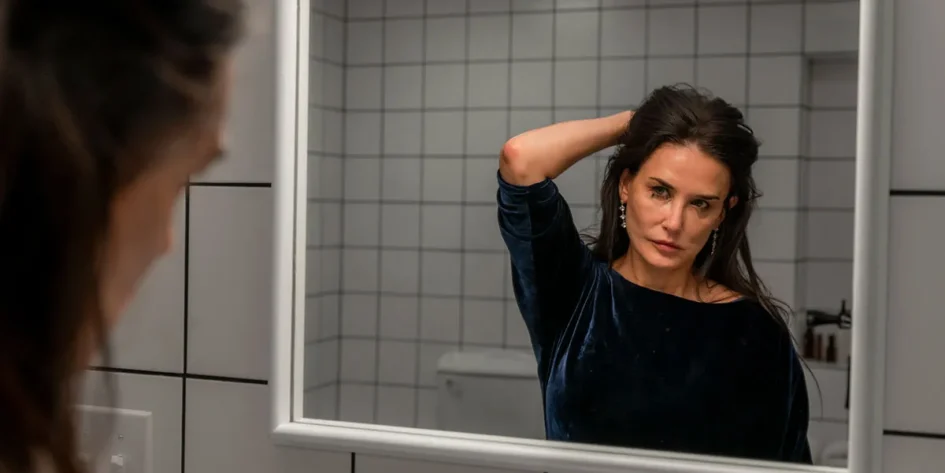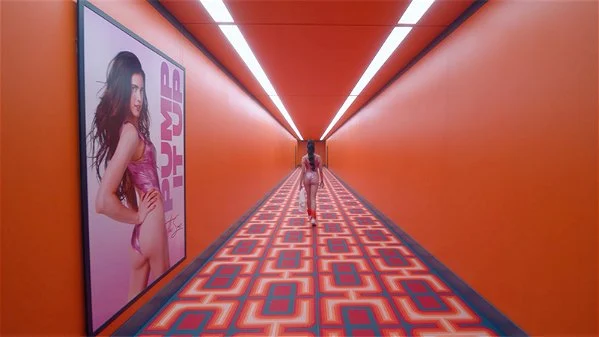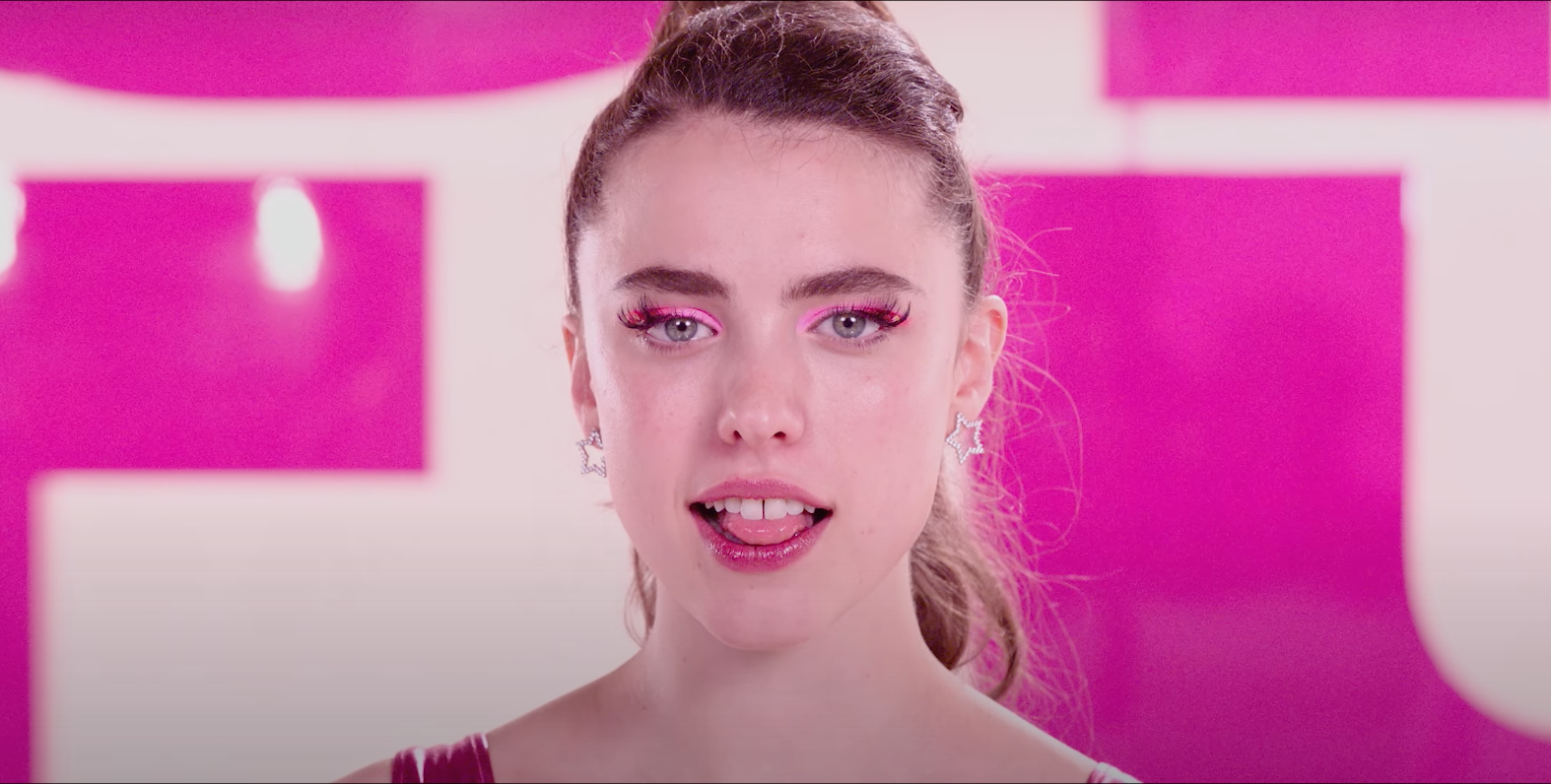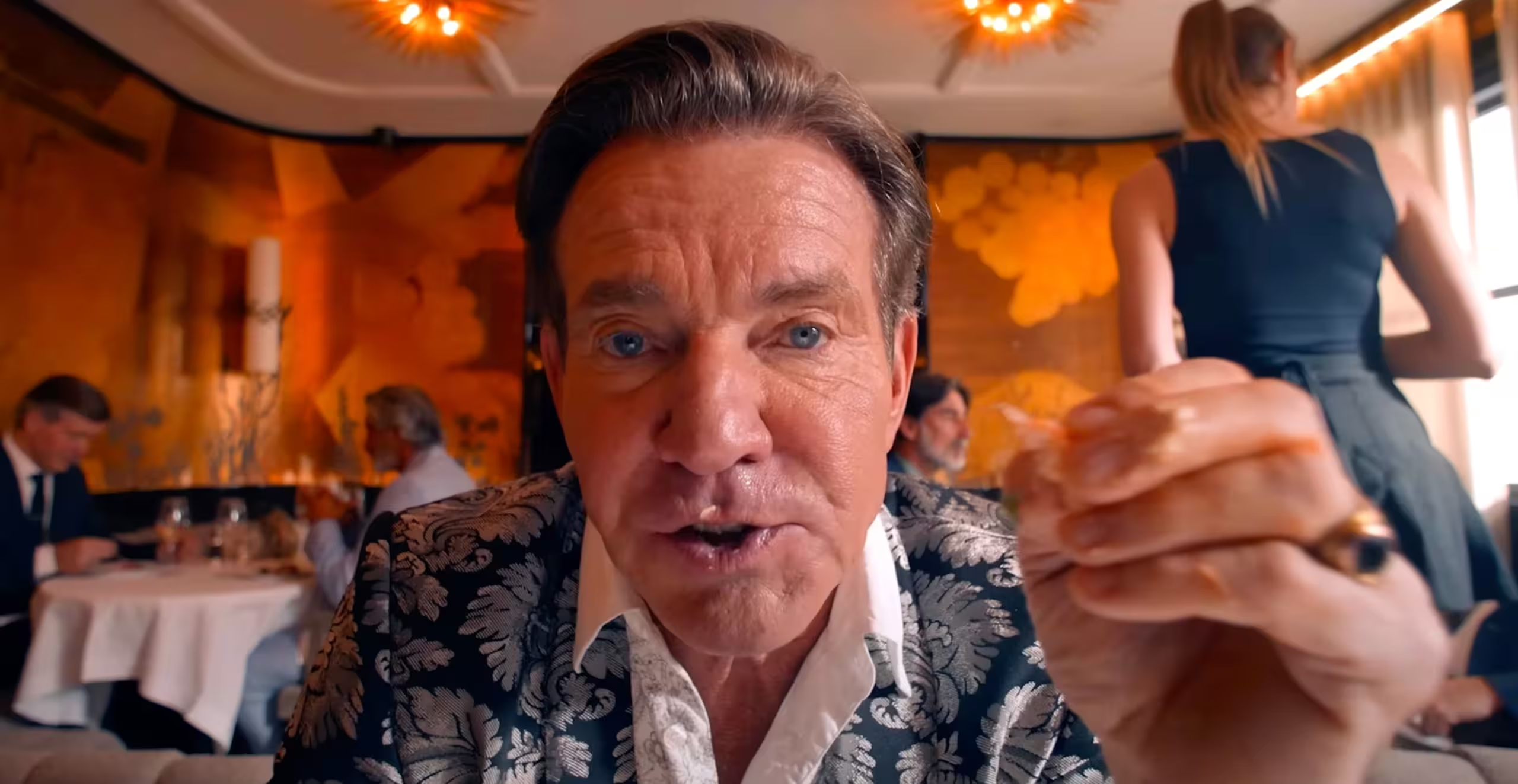“Have you ever dreamt of a better version of yourself?” the black-market drug known as “the substance” asks, and in reality, who hasn’t? In a world of unattainable body ideals, the proliferation of diet drugs, and other body-modifying substances, how does one accept themselves as they are? The body-horror satire film, The Substance, explores the pervasive societal pressure, particularly its effect on women and the rampant impact of these influences on a person and what it can lead to. Sounds simple, right?
It is quite the opposite, as this film presents a multi-layered approach, characterized by profound themes, tone, atmosphere and more.
The Substance follows Elisabeth Sparkle (played by Demi Moore), an aerobics television star, on her 50th birthday. After losing her job, her life takes a turn for the worse. She witnesses a billboard with her face being ripped down and is then involved in a bad car accident that sends her to the hospital.
Although she escapes unscathed, it is at the hospital that she is offered “the substance,” a drug that promises a younger, more beautiful version of yourself. Initially ignoring it, her curiosity gets the best of her, and she begins the program. However, there are specific rules for it to work, and failure to do so has consequences. The story unfolds in unexpected ways from this point onward.
This is director Coralie Fargeat’s second full-length feature film, which won the best screenplay award at this year’s Cannes Film Festival. The film received a 13-minute standing ovation. Fargeat has spoken about how David Cronenberg and David Lynch have significantly influenced her work in The Substance, and you can see that influence in this film’s grotesque body horror, trippy visuals and unique editing.
This is your warning: If you are squeamish about body horror, you may find it difficult to watch.
But the camera work is still impressive, even if several visuals may repulse you. Cinematographer Benjamin Kracun uses intense close-ups and long, low-angled shots to create a feeling of unease and discomfort. In one notable scene, Harvey (played by Dennis Quaid) is shown eating shrimp in an extreme close-up of his mouth, which evokes disgust and revulsion. The film also features skillfully executed long hallway shots and uses striking colors such as vivid yellow, orange and blues. The bright green substance in the film also contributes to establishing a Lynchian atemporal world.
In the opening sequences, a brightly yellow egg yolk is shown, and when the substance is injected, it slowly starts to split, demonstrating how the drug works.
At this time last year, horror fans advocated for Mia Goth to receive the Best Actress award for her performance in the film, Pearl. This year, the focus has shifted to Demi Moore for her portrayal of Elisabeth Sparkle. Moore delivers a compelling performance, drawing parallels between herself and her character, both esteemed Hollywood figures navigating the challenges of aging and body-image scrutiny. This role showcases acting prowess, reaffirming her status as a formidable talent in the industry.
She also has a fully nude scene, and what I love is that she does not use a body double. Her body is imperfect, and it takes a lot of bravery and vulnerability to do that, and I highly respect it. She is a gorgeous woman, and I think this is the masterpiece of her career.
Other remarkable performances include Margaret Qualley as Sue, Elisabeth’s younger and more beautiful product, and Dennis Quaid’s portrayal of Harvey, who embodies an arrogantly over-the-top persona. Both actors push their acting skills to the limit, delivering captivating performances: Margaret’s confidence and increasing arrogance as Sue oozes through her portrayal. Dennis Quaid’s character is a departure from his previous roles, showcasing a darkly comedic, yet vile persona.
His treatment of Elisabeth, compared to Sue, differs drastically due to her age and beauty. Unfortunately, this reflects a shared reality in Hollywood and everyday life for many women. Harvey tells Elisabeth, “It all stops at 50.” Elisabeth asks, “What stops?” He could not give her an answer and excused himself quickly. The thematic emphasis is on the male perspective, with many close-ups and commentary on specific female body parts represented by Quaid’s character.
The soundtrack and sound design are also phenomenal. The persistent pulse of the bass and the rhythmic club beats establish an atmosphere of eager anticipation, evoking a sensation as if one can perceive the substance coursing through one’s veins. I mentioned the shrimp scene with Harvey, and the sound of him tearing apart the flesh of the crustacean is grotesque and disgusting. It’s incredible how such realistic audio is created for things you’d never want to see or hear.
There are many sounds and moments like that in this film: ones you never want to hear go squish or see up close. That is the beauty of body horror films: images and sounds you would never seek out alone.
The pivotal element of this film is undoubtedly the implementation of practical effects. While I had heard of their exceptional quality, I was unaware of the specific scenes in which they were utilized. I am grateful that this aspect was not spoiled for me, and I am committed to not spoiling it for you. However, I can confidently assert that I have not encountered practical effects of such caliber since John Carpenter’s The Thing.
This declaration may appear audacious; nevertheless, I was elated when I saw them on the screen. In the trailer and poster, you can see Sue being “birthed” from Elisabeth’s back, which is just the start of the fantastic visual effects. Although digital effects were used, the execution was so seamless that it’s hard to tell where they were applied. It’s incredibly well done. The effects intensify as the movie unfolds.
Do you think the events in the second act can’t be surpassed? Just wait until the third.
In the third act, the movie shifts from horror satire to almost camp, and I loved it. Does it go off the rails? Sure. But in a way that Sam Raimi fans will be jumping for joy. Margaret Qualley does a lot of the heavy lifting here, and the grotesqueness reaches a peak that will have people talking for years. When the credits started to roll, I just had to sit there and let the insanity soak in before I left.
Despite my usual preference for movies to be under 90 minutes, the 140-minute runtime of The Substance is justified. I cannot think of a segment I would shave down or change. I did wonder if we should know more about Elisabeth Sparkle’s past, but even without that, I still cared for her character. I can relate to feeling inadequate because of my physical appearance. As a millennial mother, I understand the struggles of body dysmorphia. Despite overcoming those negative thoughts, I still recognized some of myself in her, and I think most women will, too.
The film has left a lasting impression on me, and I eagerly anticipate its digital release so that I can experience it again. The combination of outstanding performances, musical score, visuals and script has resulted in a symphony of otherworldly pleasures for the eyes and ears. The Substance is now my top horror film of the year, and I give it a perfect five out of five stars.
However, the year isn’t over yet. The next film I am most excited about is Nosferatu. I can’t wait to see what happens with my list, but I am thrilled about the horror movies we have gotten in 2024.



